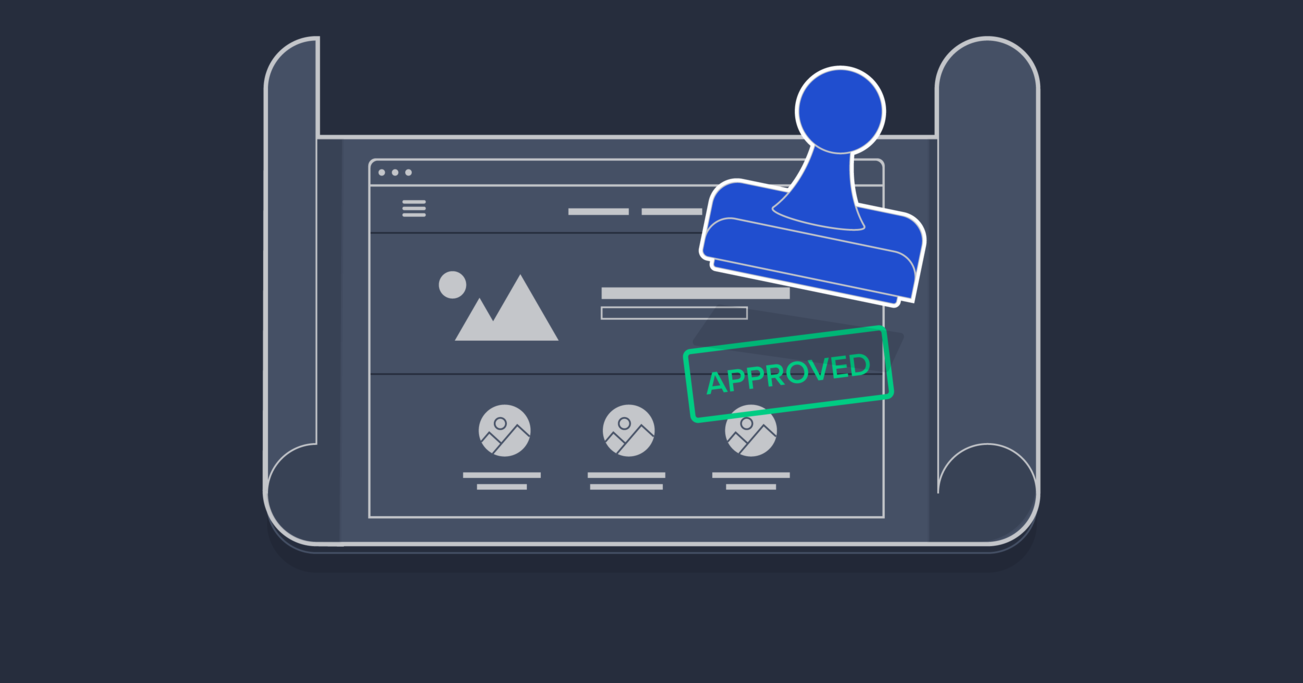A Design License Is Not the Answer
Design decisions can be complex, with potential legal and ethical ramifications. Designers have a responsibility to produce work that will not harm others, but is design licensing the best solution?
Design decisions can be complex, with potential legal and ethical ramifications. Designers have a responsibility to produce work that will not harm others, but is design licensing the best solution?
Many professions require licensing. From a public safety perspective, it makes sense that people who could potentially harm their customers should have a minimum level of qualification.
Do designers fall into this category? Designer Mike Monteiro thinks they should. In an article he published on Medium a couple of years ago, he posits that designers can cause real, lasting damage with their work, and the best way to prevent this is to require licensing.
While Monteiro brings up some excellent points in the article, his solution—a design license—may be taking things too far.
Why a Design License Doesn’t Make Sense for Digital Designers
Let’s face it - the vast majority of design projects are not life-or-death situations. There might be millions of dollars on the line with some projects, but they’re not likely to kill or injure anyone if they go badly.
The lack of physical risk differs from many other professions that require professional licensing. Doctors deal with literal life and death. No one wants to go to a doctor who isn’t licensed. Lawyers can keep people out of prison (or put them in prison). Cosmetologists work with potentially dangerous chemicals that can cause real, permanent harm if they don’t know what they’re doing.
Licensing makes sense for a lot of professional services. If a person who doesn’t know what they’re doing passes themselves off as a doctor, electrician, cosmetologist, etc., they could cause real bodily harm to their customers. And since the average person doesn’t have the time or resources to thoroughly vet a professional they might be working with, licensing provides at least a base level of assurance that the person has the necessary skills to perform their job.

Digital designers, on the other hand, are rarely working on projects that could cause real harm to people. There are exceptions, of course. Websites for particular industries or businesses have necessary accessibility requirements that could cause harm to people if ignored. Hospitals, disability services, and emergency services are the most obvious of these. If a person with a disability can’t access necessary information on something like a disability services website, they could be prevented from accessing those services and experience very real injuries as a result.
Ethical Responsibilities of Designers
While few UI designers are dealing with issues of life and death, design can have a significant influence on human behavior. Good design purposely manipulates the people interacting with the design by evoking things like positive feelings or desirable actions.
Manipulation is often thought of in a negative light, but it doesn’t have to be negative. Designers can ethically influence people’s emotions by tapping into basic needs and wants. For example, using imagery of happy people enjoying a product to evoke a similar emotional reaction in potential customers. There’s nothing ethically questionable about that manipulation as long as the images used are accurate representations.
Issues arise, however, when designers start to manipulate in ethically questionable ways. Think of how social media sites use algorithms to present content to individual users. It can create an echo chamber that reinforces a person’s beliefs, regardless of whether the information they’re receiving is accurate or not.
Beyond manipulation, other ethical implications come with different design decisions. As Monteiro highlighted in his article (and a subsequent interview with the LA Times), things like privacy settings on social media platforms can have a real-world impact. When a user meticulously manages their privacy and security settings to protect themselves, and a social media platform makes decisions that override those settings without proactively informing users, a simple privacy setting can become a life-or-death situation.
Designers have a responsibility as gatekeepers of the information that makes it onto the web. Clients hire them as experts, and while it can feel intimidating to some designers to tell a client that a feature they want to implement is ethically questionable (or outright dangerous), it’s a designer’s responsibility to lend their expertise on those subjects as necessary.
Considering the societal and cultural impact of design decisions can feel foreign to some designers. Nevertheless, in an increasingly connected world, it’s an essential aspect of design. For many people, the internet has become integrated into nearly every aspect of daily life, and the influence it holds should not be discounted.

For this reason, an ethical code of conduct is something designers should be concerned with. Examples already exist, created by individual designers as well as from official industry groups. Making this a more prominent part of the design industry and educating clients about the importance of ethical design should become a priority. And designers should be encouraged to both participate in the development of a universal set of ethical standards and become signatories to those standards.
Design Licensing vs. Design Accreditation
Licensing comes with several drawbacks. One notable disadvantage is that a license will increase the costs designers incur, which will then be passed on to their clients. It’s not just the license fee that will cost designers money, they’ll likely have to spend significant sums on classes, exams, and continuing education to maintain one as well.
Besides the cost, licensing creates unnecessary barriers to entry. New technologies evolve on an almost daily basis. Designers have to figure out how to work with those technologies on the fly. Licensing, depending on how it’s structured, could create barriers to innovation. If a designer is unsure whether their license will allow them to work on an experimental design, many may opt to play it safe and pass on the project.
Take, for example, driverless car technology. Just a few years ago, the idea of driverless cars was in the realm of science fiction. The early engineers and designers who worked on the technology had to figure things out as they went. There was no one to train them. There were no existing standards for the “right” way to do things. How can meaningful licensing standards be created for technologies that don’t yet exist?

Another issue that arises with licensing is geography. Design truly knows no borders. With sufficient internet access, a designer can work from virtually anywhere in the world. The idea of getting some kind of global consensus on licensing standards is unreasonable.
The lack of global licensing would put some designers at an advantage over others. It could cause designers in areas where licensing is required to potentially price themselves out of competitive markets.
What about clients who want a simple website that lists things like their hours of operation, contact information, and maybe a few photos? Are they expected to pay a licensed designer? What happens if someone wants to use a platform like Squarespace to design their own website? Will they need a license?
In addition, designers who don’t live in countries where licensing is required might be working in a legal gray area when contracting with clients in countries where licensing is standard.
Another potential issue with licensing is the distinction between design and art. Who decides if a website is “design” or merely a digital art project? If digital and interactive artists needed a design license to share their work online (or pay someone with a license to rubber-stamp their art), innovation and creative expression would be stifled to such a degree that most designers and artists would revolt.
Instead of licensing, some kind of industry-wide standard accreditation makes more sense. Accreditation allows for a minimum standard clients can insist on for designers they hire, while allowing other designers to work outside of the accreditation if they so choose.
It would also remove barriers to entry for new designers. A lot of designers learn by doing, and some of the best designers have very little formal design education. Professional licensing almost always requires formal education, which could make it very difficult for new designers to enter the field.
Guaranteeing that accessibility standards are followed doesn’t require licensing. Better enforcement of laws already in place would help in that regard, and designers already have a legal and ethical responsibility to comply with accessibility and privacy laws.

Conclusion
While licensing for designers is probably overkill, designers do have an ethical responsibility to their clients to produce work that will not cause harm to others. The design decisions required are often complex. Designers who aren’t confident in their abilities to consider all of the possible ramifications or complications that arise from a digital product should steer clear of those types of projects.
Designers also need to ensure they keep up with legal developments that can affect their work—including accessibility laws, privacy laws, and laws regarding storage and use of personal data. These laws should be more actively enforced, particularly for websites or digital products where a lack of adherence to laws has real-world consequences.
Professional accreditation for designers would go a long way toward ensuring that qualified designers handle high-risk projects. It would also help designers get a clear understanding of the kinds of ethical and legal considerations they should take into account in their work.
A design license may not be the answer, but a higher level of ethical and legal responsibility will only benefit the design industry and everyone it serves in the future.
Further Reading on the Toptal Blog:
Understanding the basics
What is an ethical designer?
An ethical designer is a professional who takes into consideration all of the ethical implications of the design decisions they make. They consider how persuasive design techniques and design psychology influence user behavior and make sure they aren’t using those techniques for negative or questionable outcomes.
Do you need a license to be a designer?
Design licensing is not required, despite calls from some industry leaders to do so. However, designers should make sure they’re familiar with the legal and ethical implications of the work they do and follow standards laid out by professional organizations such as AIGA to ensure their work does not harm users.
How long does it take before you qualify as a designer?
There is no minimum time that it takes to qualify as a designer. Designers should understand the principles of design and how to implement them, as well as understand the technologies and applications they’re working with. Designers can seek web design credentials or accreditation if they choose.

